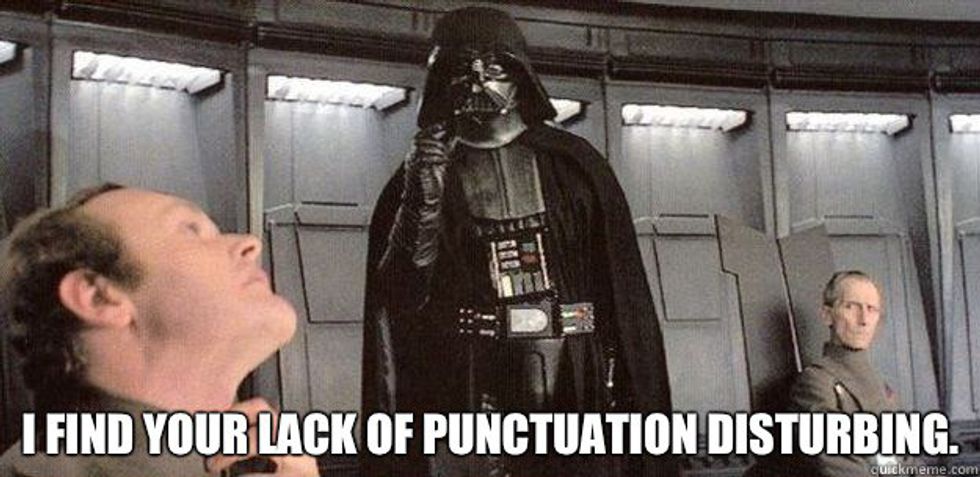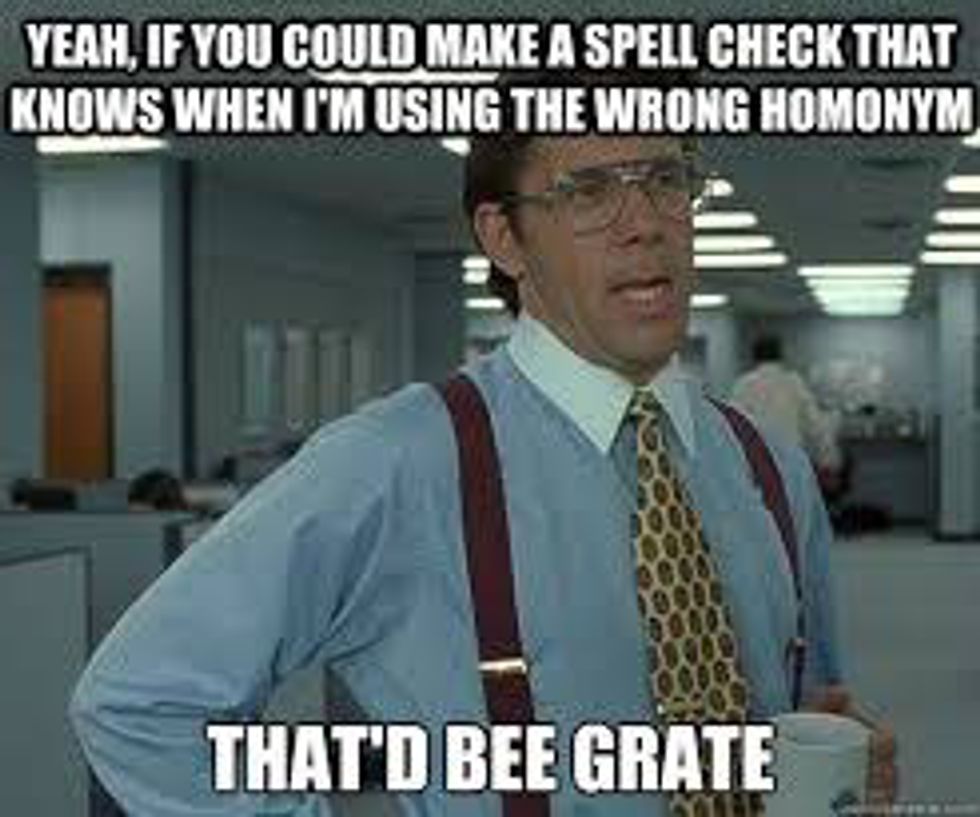This week's article is based off of a mug I saw while scrolling through Facebook, definitely not procrastinating. *cough*
And this got me thinking about how there were a few things that REALLY got on my nerves as a writer and editor of my younger siblings’ work.
Here are a few of my pet peeves in grammar.
1. The first, and definitely most common, is using too many pronouns. If you have four characters in the scene at the moment, all girls, and all you see on the page is “she said” or “her bag” all you’ll be doing is confusing your editor and, eventually, your reader. Now, the reason why this infuriates me is because of how confusing and unclear it is. Your character could be in an epic battle to the death…but then it’s just ruined because of all the pronouns jumbling into each other, which created a word-tactic disaster.
For the sake of your reader’s sanity, try to make your manuscript as clear as possible.
2. Another mistake that happens a lot is when you write something like this: “I'm happy.” She says.
Oh, it takes so much willpower to write such a terrifying sentence.
This sentence is so very wrong on so many levels.
(If half your manuscript is like this, high five. I did the same mistake first time around).
First off, after “happy” there should be a comma and not a period. “She says” and “I’m happy” are in the same sentence, so they shouldn’t be separated by a period. The second mistake here is the capital “s” in “She.” “She” should not be capitalized unless you are starting a new sentence or for some reason you named a character in your manuscript “She.” Which I highly doubt.
3. Another BIG mistake is mixing homonyms.
Don’t lie to me, I know you’ve done this same mistake at least once in your life. There’s an example of two, no, now four homonyms in the previous sentences. “Your” is always mixed with “you’re.” Now, let the Grammar Queen (aka me) explain this to you. “Your” means belonging to you, as in “your bed is there.” “You’re” means “you are” like “you’re in the wrong building." Another frequently mixed homonym is “there,” “their,” and “they’re.” "There" as in the place, “their” as in belonging to them, and “they’re” as in they are.
However, I do admit that sometimes it can be hard, but with practice it will come naturally.






















